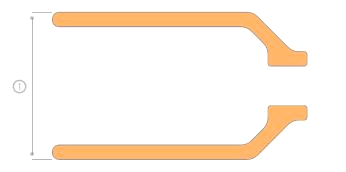Stunt Scooter Pegs
Inspired by BMXs, the pegs are the lateral extension of the scooter. Essential for rail and grind enthusiasts, pegs facilitate many tricks, such as the Smith Grind. They allow a range of tricks exclusively possible thanks to pegs, such as the "toothpick" and the "icepick". Previously, extended axes were used. Today there are many variations and it depends on your preferences and what you want to use. Some are suitable for the park, others for the street. Some last longer, others less, so you need to know the area of application and the properties of the material. Here you will find our selection of high quality pegs for your freestyle scooter.
Materials
There are mainly 3 types of pegs: aluminium, steel and plastic.
Aluminum pegs are lighter than steel pegs, but they are not as strong and wear more quickly. Only 7075 aluminium pegs make a difference, almost as strong as steel, they are only available as "premium" pegs. Aluminium pegs should only be used by people with light use on the street or in a park because they break just faster.
Steel pegs are heavier but stronger. Perfect for the street, sliding on all surfaces, even the roughest. Sometimes you also see sparks when you rub a lot. This proves that they are resistant to friction.
Plastic pegs are very light, but their abrasion is higher. They glide smoothly over almost all surfaces. The American company Magray has also developed pegs combining plastic and metal, the SLI Pegs. The development of skateparks in this country should no longer prevent the use of Pegs thanks to the increased use of SLI Pegs.
Weight
Although the pegs are light, they can affect the balance of a scooter, especially at the back if you put them on one side only. Don't forget to count the axle and washers, which also have weight.
Length
Length is a matter of taste. Most riders ride 50mm pegs. All pegs longer than 50mm can more easily touch the ground by leaning to the side.
Diameter :
Diameter also plays an important role. When attaching a peg to the rear, check that the peg is larger than the deck, otherwise you may affect your Feeble Grinds or Icepicks.
Your peg shouldn't be too thin either, but it depends on the thickness of your deck.
Compatibility
It would be nice if each peg was compatible with all decks and forks, but this is not always the case. Therefore, it is important to buy compatible pegs, such as the Blunt, which already have 4 axles of different lengths to cover all forks and deck widths. If the design of a deck or fork prevents it from fitting directly into the opening provided, simply use a washer between them to bridge the gap.
Most brands send the peg with the pin so that the pin fits the fork or deck, but if you use a different deck or fork, the pin may be too short or too long. If it is too long, just cut it off and if it is too short, you can find longer ones in our shop.
But there are also brands such as LG Scooter that offer special pegs that are screwed directly onto the existing axle, i.e. you unscrew the short part of the axle and replace it with the screw that is firmly connected to the peg, a very good invention, because you keep the original axles completely.
Installation
If you only install the pegs on one side, always put the peg on the shaft and not on the thread, otherwise too much pressure will build up on the shaft and the peg will break. Always make sure that there is no gap between the pegs and the deck or fork, otherwise it will not be possible to screw it in. If this is the case, simply insert a washer to compensate for the distance.

















